Get PeakVisor App
Sign In
Search by GPS coordinates
- Latitude
- ° ' ''
- Longitude
- ° ' ''
- Units of Length
- Temperature

Yes
Cancel
Share ×

Scan the QR code and open PeakVisor on your phone
❤ Wishlist ×
Choose
Delete
Winter Park Ski Resort is in Colorado and is one of the ten largest ski resorts in the United States. It is the longest continually operating resort in colorado. The Panoramic Express chairlift is among the highest in the U.S., reaching 12,060 ft (3,676 m), and is the fastest six-person chair at such elevation. Winter Park Ski Resort is an excellent place for any type of skier. Family runs are abundant, but the resort’s main feature is the expansive expert terrain on the Mary Jane side of the mountain with some of the best moguls in the world. In total, there are 166 slopes of 68.3 mi (110 km) and 23 ski lifts. The Winter Park ski season is from late October to late April. During the summer, the resort also serves some of the best mountain biking in North America at Trestle Bike Park.
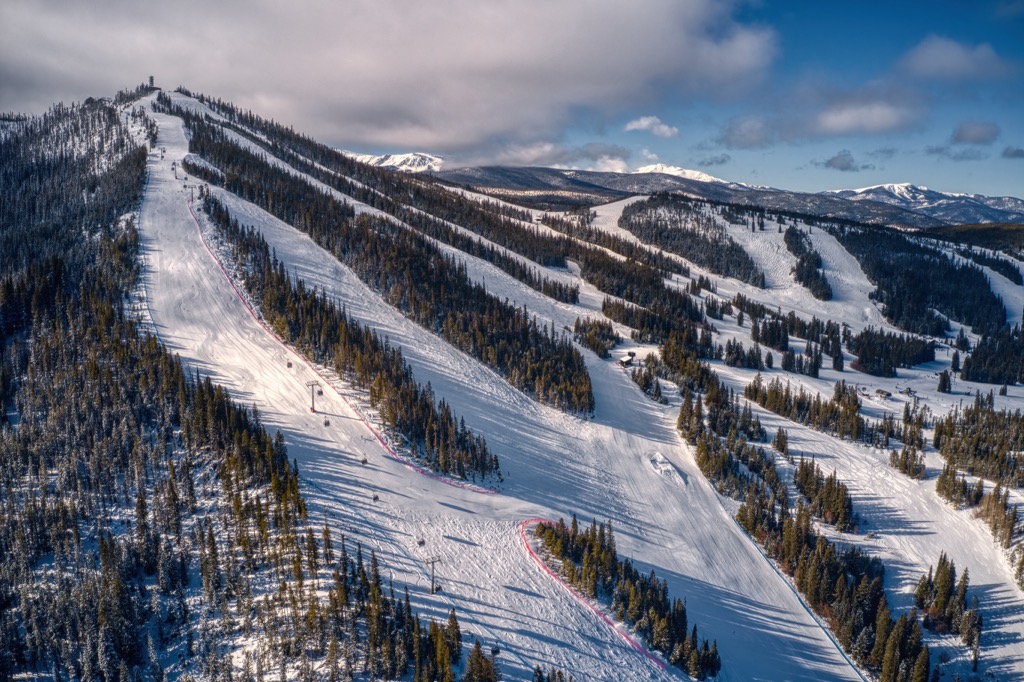
Perched in Grand County, Colorado, Winter Park Resort is about an hour and a half northwest of Denver. The resort is closest to the Front Range of the Southern Rocky Mountains, with a base elevation of 9,000 ft (2,743 m), reaching up to 12,060 ft (3,676 m) at the top of Parsenn’s Bowl, with a maximum vertical drop of 3,061 ft (933 m). The ski area straddles the southern end of Rocky Mountain National Park. On a bluebird day, you can even see Longs Peak (14,261 ft / 4,347 m), one of the most iconic 14ers in America.
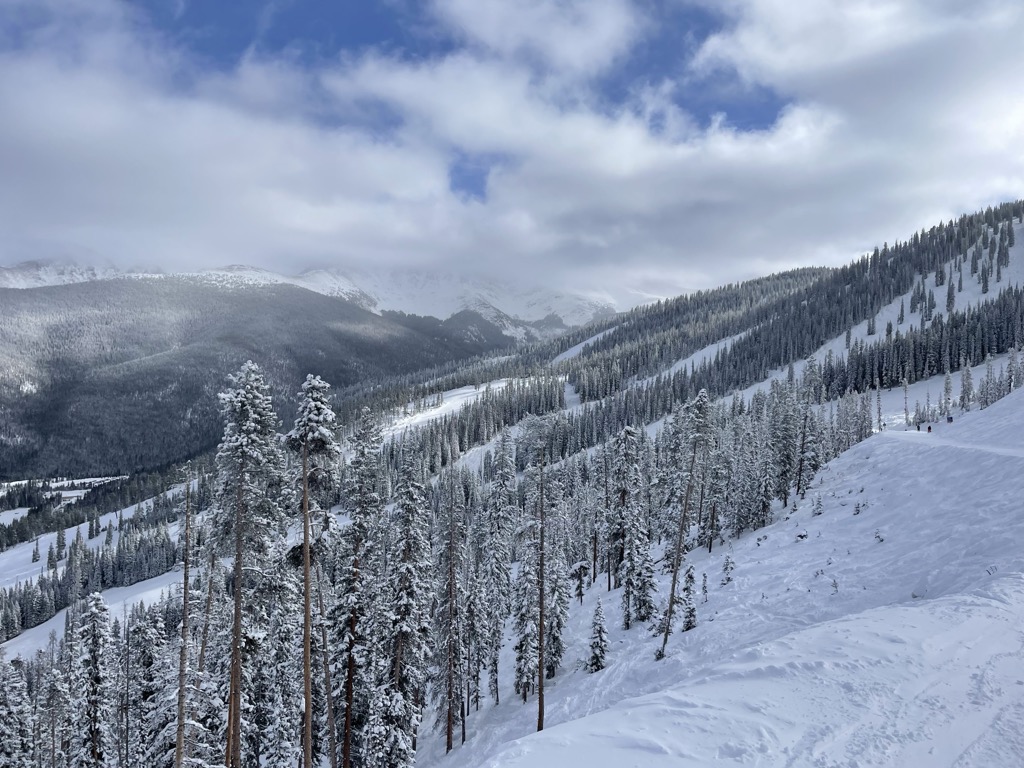
Grand County and the Fraser Valley have many peaks reaching over 13,000 ft (3,962 m), including James Peak (13,314 ft / 4,058 m) and Parry Peak (13,376 ft / 4077 m), which has a run named after it.
With many prominent mountains to explore, there are abundant winter and summer hiking trails throughout the valley. In the summer, the nearby natural areas of James Peak Wilderness Area and Arapaho National Forest provide many trails for cross-country skiers, snowshoers, mountain bikers, dirt bikers, and hikers.
Winter Park Resort is one of the main ski resorts near Denver. Access is straightforward, and the drive is less than two hours. Because Winter Park is north of the cluster of Summit County resorts, traffic can be more manageable than heading to the I-70 ski areas. However, like any Front Range ski area, traffic can also be terrible.

The nearest airport to Winter Park Resort is the Denver International Airport, 90 mi (145 km) away. DIA is one of the most accessible airports in the U.S., offering direct flights to and from all points within the country. Worldwide, prospective visitors will find direct flights from the largest cities, with easy connections from other locations.
Once visitors have landed in DIA, it’s easy to find all the necessary services, including shuttles, car rentals, hotels, and public transport.
You must take the busy ski highway, I-70 West, until you reach US-40, also known as Berthoud Pass, to get to the resort. Although you still have to drive on I-70, you can avoid some of the traffic to Summit County (Breckenridge, Copper Mountain, Keystone, etc.).
Winter Park Resort features a train service on weekends during the bulk of the season, generally from the beginning of January to the end of March. The train offers a stress-free and speedy way to get to the resort. Single, round-trip, and season passes are available.
Traveling to Winter Park via car is manageable because there is endless free parking.
There are a handful of free lots at the base and even more across US40, where you can take their free shuttle system.
My favorite place to park is in one of the lots on the Mary Jane side of the mountain or on Mary Jane Road, where there is also a shuttle service. Lots on the road are great because you can ski to your car at the end of the day. However, the traffic on Mary Jane Road is relentless, so plan accordingly.
There is overnight parking in G Lot. The resort just asks that you park in the middle for plowing purposes. Some folks park at the summit of Berthoud Pass overnight and take the 30-minute drive to the resort in the mornings.
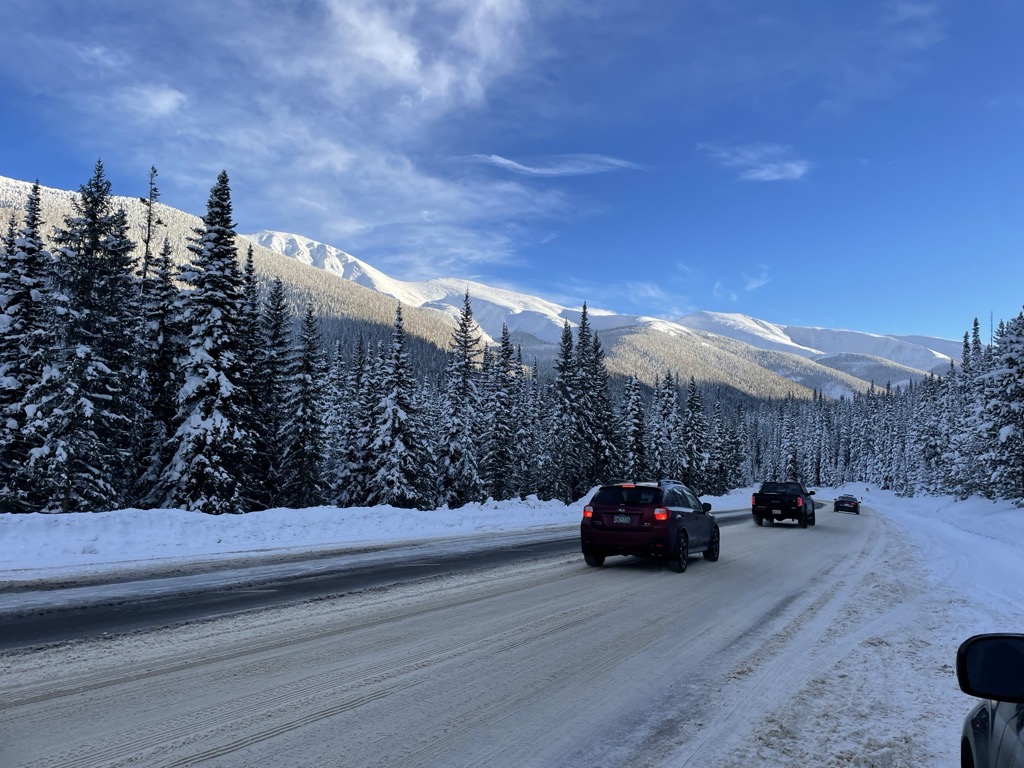
Many folks rent a car directly from the Denver Airport, but shuttle services are also available, like Home James Transport. Shuttles are a great option, as they accommodate many group sizes, and you can enjoy the beautiful drive up Berthoud Pass without committing to the white knuckle drive.
There is a free bus, BCTransit, throughout the central Fraser Valley. The bus is convenient and eliminates the need for a car, especially if you’re a local or staying in town.
Winter Park Resort typically opens around mid-November and closes in mid-May, with the best snow coming in March. The 2022–2023 season was the earliest that Winter Park has opened in history, with their opening date on Halloween and their estimated closing day on May 21st. Some seasons are significantly snowier than others, but Winter Park’s geographic location, northern exposure, and altitude ensure snow coverage, even on bad years. While poor snow years aren’t particularly exciting for powder-hungry locals, they seldom affect lift operations or on-piste skiing.
Ranked amongst all the resorts in Colorado, Winter Park has the fourth-highest annual snowfall in the state, with an average of 344 in (873 cm), per the resort’s official website. There is a modern and complex snowmaking system on the Winter Park side, but Mary Jane has only natural snow. No artificial snow operation means opening this side of the resort may take longer, but it is worth it to ski the natural powder.
The whole Fraser Valley experiences many massive snow storms during the winter season. Storms like to generate and stay socked in this pocket longer than they would in the open Summit County, for example. Winter Park also averages 240 days of sun per year, which means ample opportunities for blue-bird powder days.
Colorado ski resorts don’t get as much snow as other destinations out West, such as Utah, California, Washington, and Wyoming - however, every inch counts at Winter Park. When snow falls, it’s the soft and fluffy variety. Skier folk call this ‘blower’ powder. Moreover, snow stays dry and fresh days after a storm due to the high altitude, low sun angle, and dry air (which sucks the moisture out of the snow).
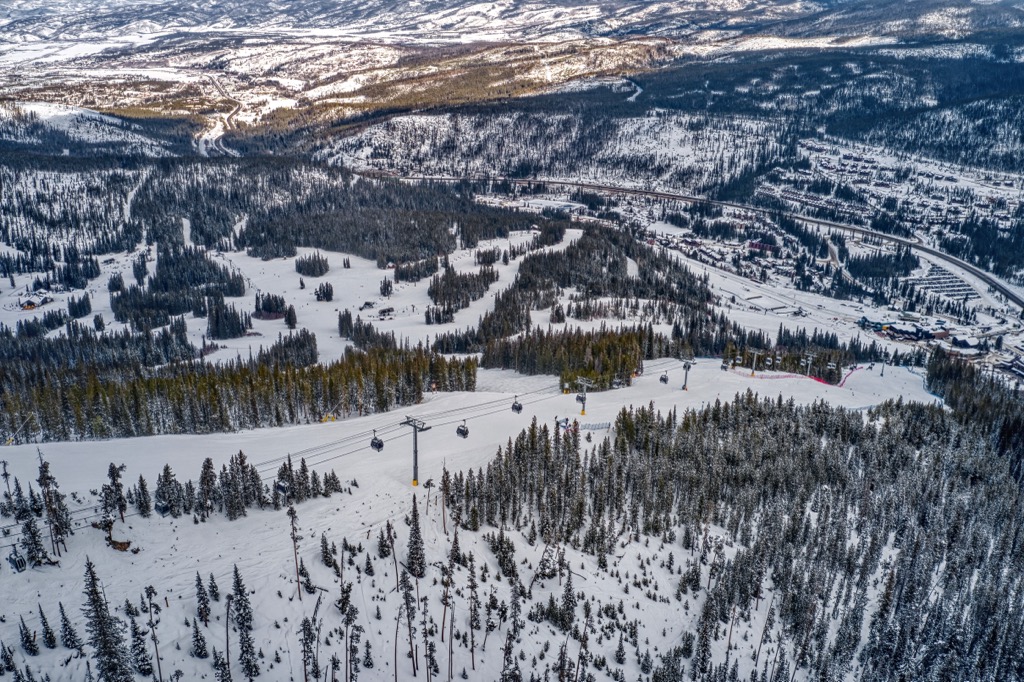
Winter Park is a massive ski resort with 3,081 acres (1,246 hectares). There are seven territories to this mountain, which we will go into further detail about. With all these sections, you’re bound to get lost a couple of times — this is normal. Getting your bearings usually takes a day or two on the mountain. As a visual aid, look at the resort’s map here before heading to the resort. The seven territories include:
When you first get to the resort, there are a couple of places where you can start your skiing. If you park near the tubing hill, you can take the Village Cabriolet, an old-fashioned-looking gondola, to get to the base of Winter Park. If you shuttle or park at the base of Winter Park, you can take the Gondola or the Arrow or Gemini lifts.
The other way to enter the slopes is to go to the base of Mary Jane and take up any of the five lifts at the base of this territory. Taking the will give you access to almost all of the other territories, as it takes you to the top central point at Lunch Rock. The Gondola will allow you access to Winter Park, Mary Jane, and Vasquez Ridge. There are ski patrol shacks at the top of both of these lifts.
If you see an accident or get into one yourself, call 970-726-1480 - this reaches ski patrol. In addition to the patrol shacks at the top of Super Guage and the Gondola, the third patrol shack is at the base of Winter Park.
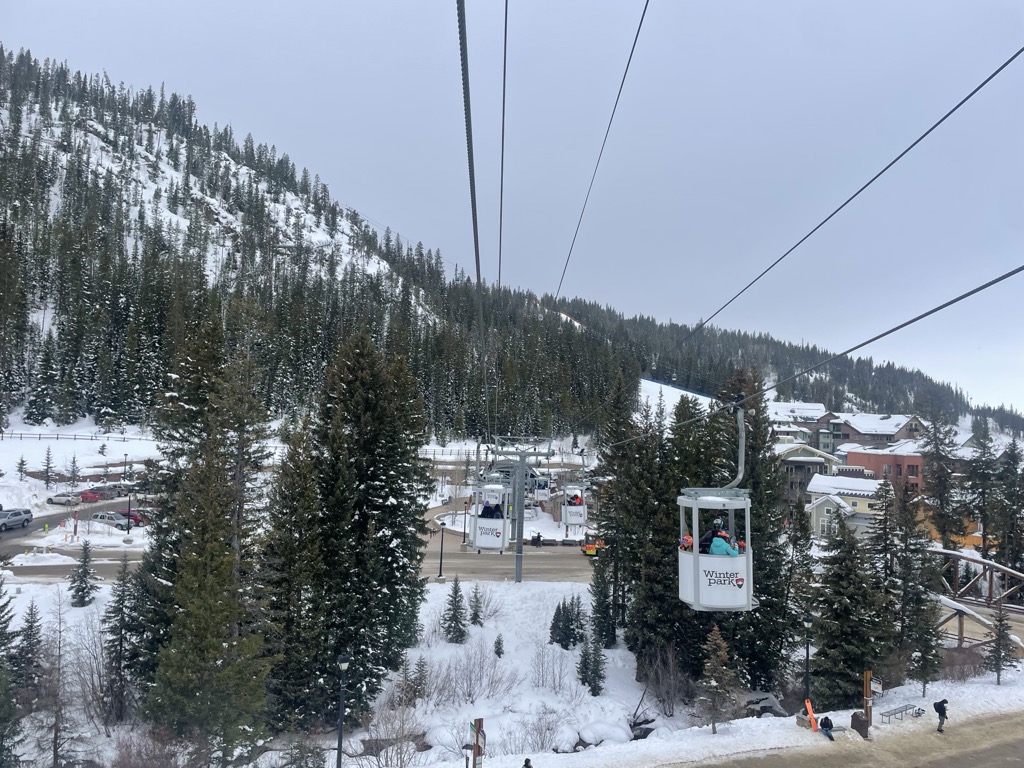
Winter Park Resort ranks in the top ten for largest ski resorts in the United States, similar to Park City, Breckenridge, and Aspen Highlands. The acreage and lengthy runs allow for a variety of skiing and a heavy quad burn. There is something for everyone here, with 8 % beginner runs, 18 % intermediate, 19 % advanced, 52 % most difficult, and 3 % expert terrain. Advanced skiers will relish the world-class moguls and glades on the Mary Jane side of the resort.
The color scheme of Winter Park’s slopes is that of the rest of the United States, but not international:
Beginners should stay in the Winter Park and Vasquez Ridge territories. Discovery Park, which services the Discovery lift, is a great place to start. In time, there are other longer chair lifts to improve on, such as Prospector Express. I recommend the Gemini Express and Endeavor lifts for new skiers and riders. The High Lonesome Express services longer green runs on the Vasquez Ridge side.
Intermediate skiers looking for long-groomed runs can similarly go to Winter Park and Vasquez Ridge. The best lifts for these runs would be Olympia, High Lonesome, and Pioneer Express. One of my favorite runs is White Rabbit, which is directly underneath the Olympia lift, and there is always excellent snow in the trees adjacent to the run. I love to head to Olympia Express because it’s the perfect chairlift to lap with a high-speed lift and fast groomers underneath.
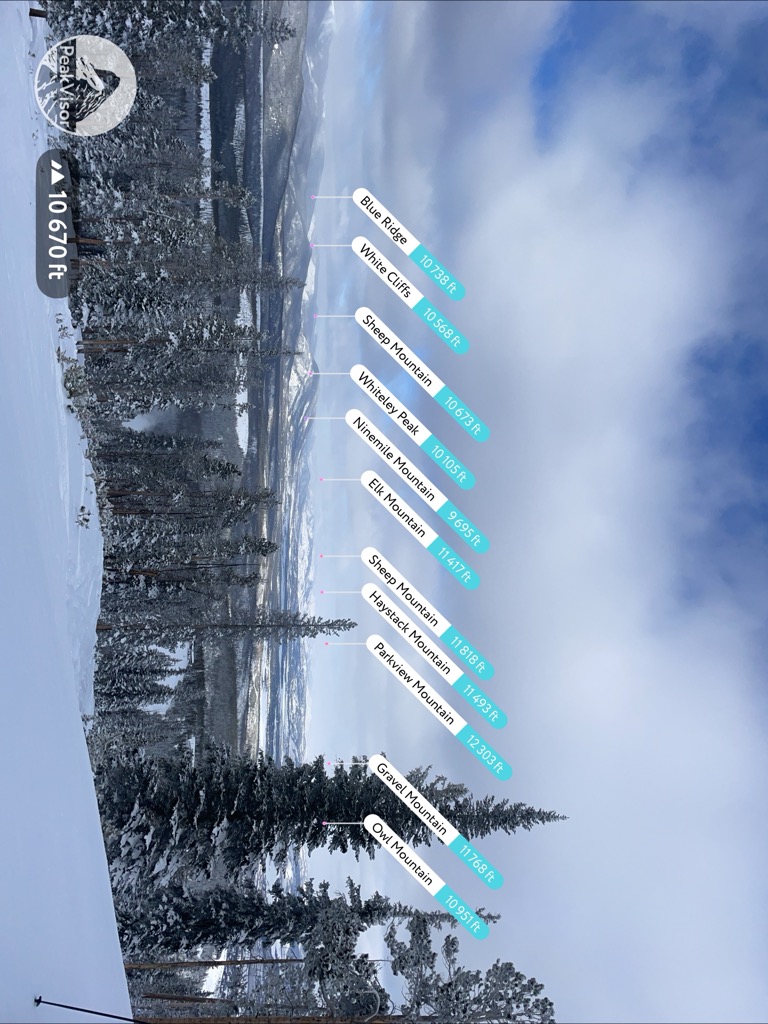
The advanced skiing at Winter Park Resort is where the going gets good because there is so much variety in the terrain.
In Mary Jane, you can find some of the best terrain in Colorado, with endless amounts of moguls, cliff drops, and even expert chutes. All the snow here is natural, and only a few runs on this side get groomed. It is relatively easy to fall into a flow on Mary Jane moguls, compared to other resorts, due to the expert skiers who specifically come to Winter Park for moguls. Unlike almost any other ski area, expert skiers’ repetitions allow the bumps to develop a pattern and form.
The Super Gauge is a high-speed six-person lift that runs from bottom to top on Mary Jane. In addition to the MJ area, it services several other territories on the mountain. You can’t ski Mary Jane without a heavy quad burn, but that is part of the joy of skiing here. The Mary Jane side is quite intimidating, but it can take an intermediate skier to an expert level. In any case, the après beers will be well-deserved.
Trestle is my favorite run on Mary Jane, with access to rock drops, tight trees, and voluptuous bumps. Nevertheless, when the sun begins to set and lowlight kicks in, it is nice to give the legs a break and ski groomers on the Winter Park side to end the day.
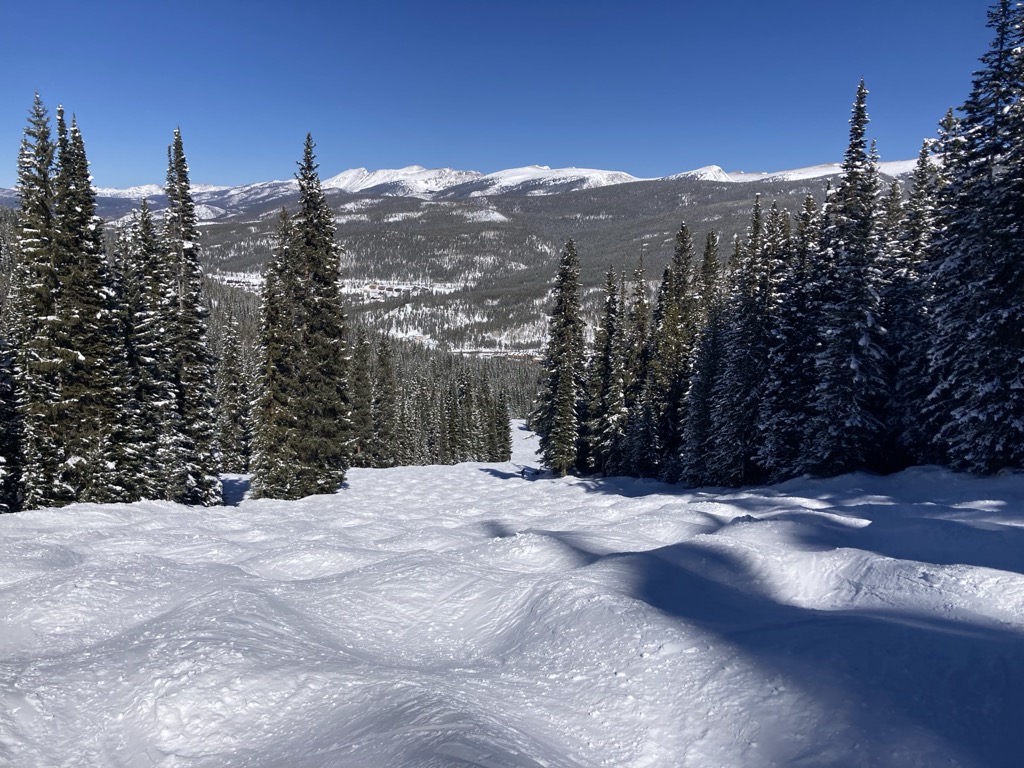
Eagle Wind is the most unique territory at Winter Park Ski Resort. With one old-school two-seater lift, advanced terrain only, and no groomed runs, it is a beautiful place to get away from the tourists and find fresh powder.
The Eagle Wind area consists of only tree skiing. The resort has gladed in some places, but the trees are generally left untouched. The tree skiing at Winter Park Resort is extraordinary and positions Winter Park at number one in Colorado. This area is quite broad, with the trees on the skiers’ left being the tightest and having the freshest snow, while the runs underneath the lift are more thinned out and open.
I have also never seen a lift line at Eagle Wind, and I have always been able to find fresh pockets. Personally, Eagle Wind takes the cake for the best territory at Winter Park. The traverse from the top of Panoramic Express is long and windy, but it’s worth it if you like skiing the trees.
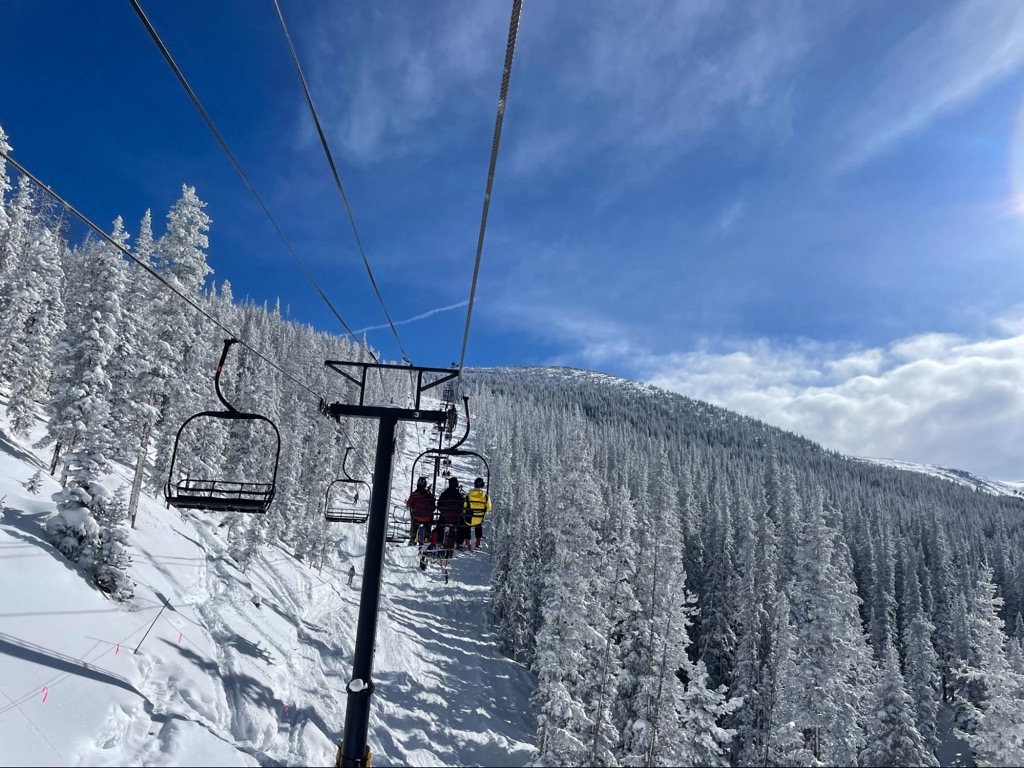
Parsenn’s Bowl is an excellent area for intermediate to expert skiers. The Panoramic Express is the highest lift at Winter Park, and it goes beyond the treeline and services long runs, plush powder, small, flowy bumps, and trees lower down. Many of the runs underneath the Pano are marked as blue/black.
The trees don’t get super tight, the bumps are moderate in size, and there are options for taking groomed runs down, such as Parry’s Peak. However, it can be cold and windy with much exposure above the tree line at the top of the bowl.
The lift lines for Panoramic Express on the weekends are always abysmal. Depending on your tolerance for tourists and lift lines, you may want to limit your time here on weekends and just ski up top during the week. After all, Mary Jane and Eagle Wind generally don’t have lift lines, even on the weekends.
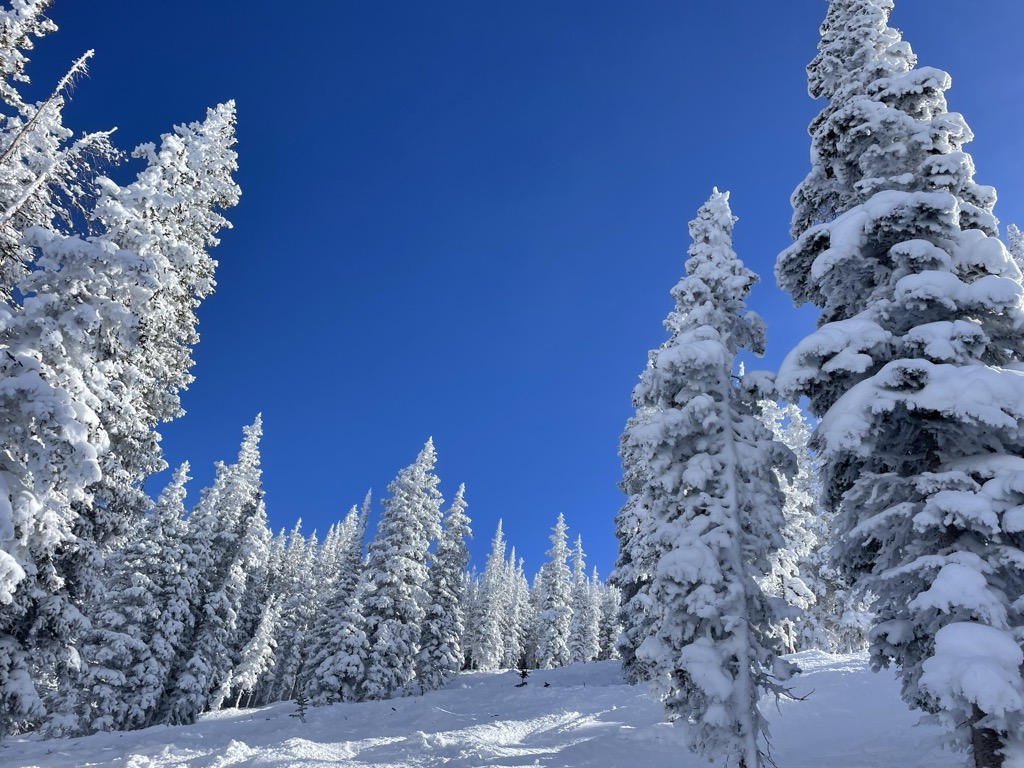
The Vasquez Cirque or Ridge, accessible via hiking at the top of Panoramic Express, is for expert skiers only. This brutal hike brings an excellent reward. With a myriad of chutes, cliff drops, and an endless amount of untouched powder, this vast area of expert terrain is incredible.
Throughout the peak season, the resort offers a Sled service to reach the top of the Cirque, rather than having to hike. However, it costs money (the amount depends on which pass you have). Although the hike up to the cirque is strenuous, it’s part of the journey. Of course, there is a sweet reward at the end as well.
But once again, I’d like to highlight that this is genuinely expert terrain only. There is typically no cell service here at Vasquez Cirque, so someone must find ski patrol to get them up there if an injury occurs. I always urge people skiing in the hike-to terrain to partner up in case of an emergency.
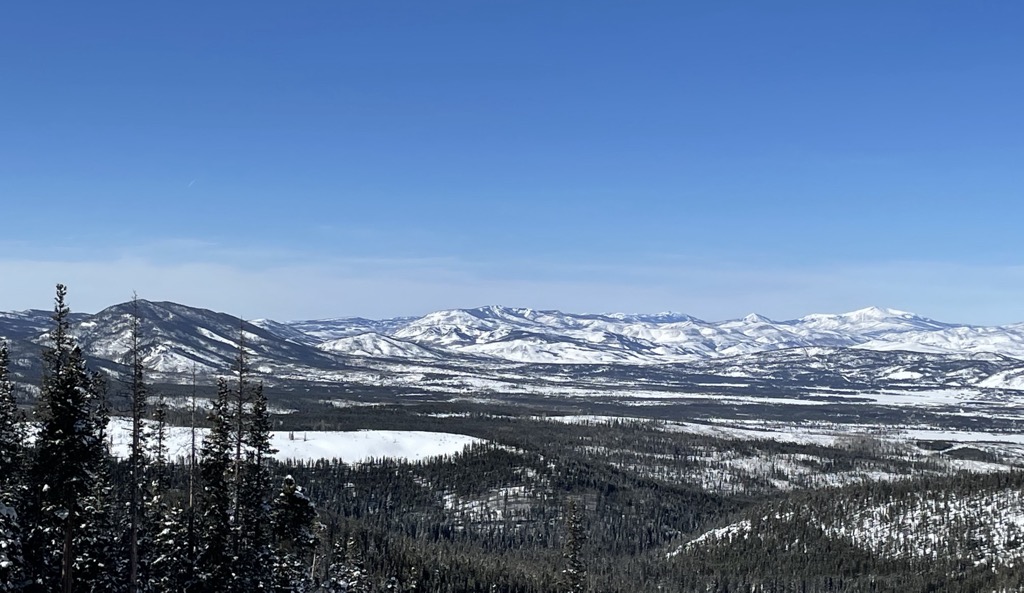
Winter Park Resort also has several smaller terrain parks located around the mountain, mainly within the Winter Park territory.
Something that sets it apart from many other resorts in the state is that it has a Super Pipe. Many resorts no longer make these pipes because they require so much snow (and water), a special snow cat to form the shape, and specific grooming techniques. The Super Pipe at Winter Park doesn’t fall short in size, and if this type of terrain isn’t for you, it is entertaining to watch the park rats send tricks off the pipe.
Ash Cat has small and medium-sized features, my favorite, and it’s a great place to start learning how to get into freestyle and park skiing.
Slopes
Ski lifts
Other features and services
Berthoud Pass (11,313ft / 3,448 m) is a hot spot for backcountry skiing in Colorado. It is one of the heaviest snowfall regions, with an average of almost 400 in (1,016 cm) per year. If you're coming from the East side, you will take this pass over US-40 to get to and from Winter Park.
There are a handful of prominent pull-off spots for parking, which many backcountry skiers utilize with great pleasure. At Berthoud Pass's summit is a large parking lot to take pictures or go backcountry skiing. You can hike further from the summit or ski down and hike back up after.
No avalanche mitigation exists in this area, and Winter Park Resort does not own it. Therefore, you must be avalanche-aware and prepared for self-rescue - there is no ski patrol for injuries. There are fatalities every year for backcountry skiers in this area - in fact, scores of backcountry enthusiasts have perished here since the sport’s inception decades ago. Please check the Colorado Avalanche Information Center (CAIC) for their regular avalanche updates and reports, and know before you go.
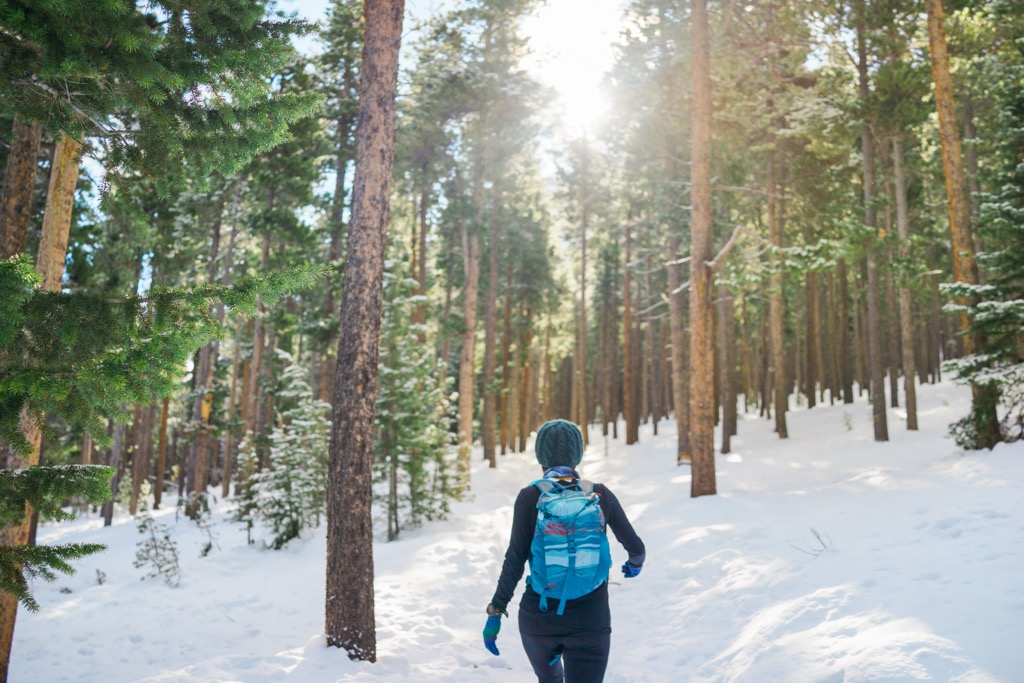
Skinning uphill at resorts is a great way to test your touring setup, learn about backcountry skiing in a controlled environment, or get some aerobic exercise.
Uphill ski access exists at Winter Park Ski Resort. Uphill skiers are only allowed in designated areas. However, they have lots of freedom to explore the resort. They are not permitted in areas that the resort hasn’t opened yet, and there is no terrain park access, Vasquez Cirque access, or access to the extreme chutes on Mary Jane. You must sign a waiver to skin up at Winter Park Resort.
I recommend uphill skiing for those trying to work out before the workday or those learning to ski the backcountry. Winter Park also offers introductory courses in uphill skiing, as well as guided tours.
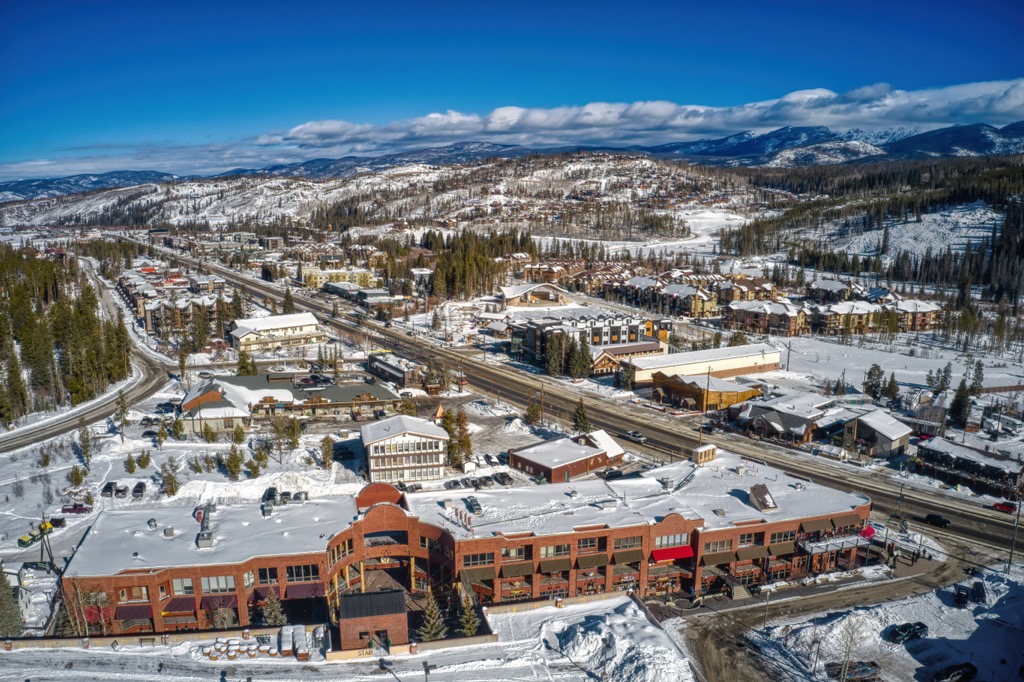
There is a myriad of options for lodging at Winter Park Ski Resort, from townhomes to studio rooms. The most popular and desired lodging option is the ski-in and ski-out condos. The condos offer maximum time on the ski hill and easy access to lunch or a break during the day.
If you are flying into Denver and don’t want to rent a car, lodging at the resort's base is ideal. You can get a shuttle service from the airport to your apartment, making your trip to Winter Park Ski Resort as seamless as possible. But to lower costs, you can head into town to find lodging. Winter Park Resort owns lodging options in Fraser and Winter Park, requiring either a shuttle ride or a short ten-minute drive into the resort.
Additionally, there are plenty of AirBnB or VRBO options around the Fraser Valley, which are easier to find cheaper places.
Winter Park Resort offers many activities for children, skiers and snowboarders, and those who want to rest their legs after a long day at Mary Jane. One of my favorite things after a long day of skiing is riding the Gondola to Sunspot Mountaintop Lodge for dinner and live music on the weekends. It’s a great date/night spot or place for a good beer après-ski.





















